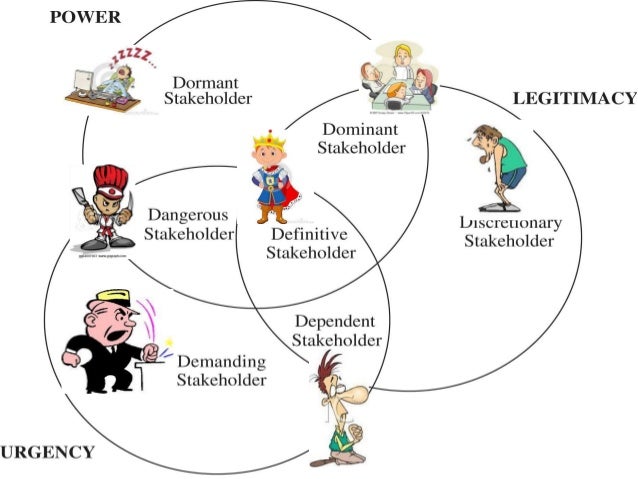
One of the most important areas of project management or any work that involves people for that matter is stakeholder management.
In fact, the main reason why projects fail is the lack of good stakeholder management.
There are a ton of tools you can use to identify your stakeholders and perform a stakeholder analysis.
I've often used such tools not just to manage projects but also whenever I'd started a new position. It's hugely important to know who your main stakeholders are, who your supporters are, who the people that you can learn from are and who your potential challengers would be. You need to know how they tick, what's important to them, how they like to communicate and make decisions and how they like to work with others.
Today, I want to show you a model for stakeholder analysis that I learned about when I was studying for the PMI certification.
It's called the salience model and serves as a tool to define and analyse stakeholders for your project.
What is the Salience Model for Project Management?
The term salience means “the quality of being particularly noticeable, important or prominent". Stakeholder salience then means the importance you give to your stakeholders and the priority you give to stakeholder claims when making decisions and executing work.
The stakeholder salience model was introduced by Ronald K. Mitchell, Bradley R. Agle and Donna J. Wood in 1997.
It uses three parameters to categorise stakeholders:
- Power: the ability project stakeholders have to influence the outcome of an organisation, deliverable or a project - essentially the ability of a stakeholder to impose their will.
- Legitimacy: the authority and level of involvement project stakeholders have on a project and whether their involvement is appropriate and to what level.
- Urgency: the time expected by project stakeholders for responses to their expectations and so the need for immediate action.
Categorising your stakeholders with this three-dimensional view allows you to narrow down the critical stakeholders and decide how to act in certain situations.
Here's a visual of what the model looks like:
Each assessment parameter has a major circle and the intersections of each major circle helps you identify project stakeholders that have multiple needs.
Types of Stakeholders in the Salience Model
There are seven types of stakeholders depending on where they fit within the model. You can categorise your stakeholders within these types as you're doing your research and analysis of them.
- Dormant stakeholders: They have power but not urgency or legitimacy. As a project manager, you should be aware of them but there is no need for major communication and involvement.
- Discretionary stakeholders: They are legitimate but have no power or urgency. Their communication needs may be in the form of actually asking for some details but may not need a ton of attention other than just regular project updates.
- Demanding stakeholders: They are people that always seem to think that their work needs your immediate attention. If you spend too much time and effort on these stakeholders, you won’t gain much project mileage. There are other more important people to work with but you should keep them informed.
- Dominant stakeholders: Power and legitimacy overlap in this case. Dominant stakeholders have legitimacy and authority. Their communication and involvement needs must be taken into account at all times.
- Dangerous stakeholders: These stakeholders have the dangerous mix of power and urgency. This combination of power and urgency makes them crucial for the success of the project even though they are not directly involved in your project so as a project manager you must meet their needs and keep them engaged and satisfied.
- Dependent stakeholders: They are legitimate and have the urgency but do not have commensurate power. Keep them informed as they could be of help when you need to leverage their strengths in navigating organisational or project complexities.
- Definitive stakeholders: The most important area in this model – where power, urgency and legitimacy converge. This is the most critical category of stakeholders which is always to be kept informed, satisfied and involved and as a project manager, you need to provide focused attention to these stakeholders.
During the course of a project, stakeholders may traverse from one category to another depending on the project scenario and where you are in your project. For example, when making initial decisions for the project you may need the buy-in of dormant stakeholders but once you start executing you probably don't need to have them involved as much.
Strategies to Manage Stakeholders
Once you categorise your stakeholders within each of the groups above, here's what you should remember with regards to managing them:
- You need to give the highest priority to the core group because this group has all the attributes, i.e., power, urgency and legitimacy.
- The next highest priority should be given to dominant, dangerous and dependent stakeholders because they have a mix of any two attributes.
- The lowest priority group consists of discretionary, demanding and dormant because they have only one attribute associated with them. Although you are giving little importance to these stakeholders, you still need to keep satisfying their needs because you never know if they'll traverse into another group.
Benefits and Challenges of the Salience Model
Here's why I like this model:
- it provides a great insight into your stakeholders and their potential impact over the project;
- it takes into consideration only those who have power, urgency and legitimacy, eliminating those without any such attribute, reducing the noise in the system and helping you spend time where it really matters;
- as such, it helps you save resources, time and effort and allows you to complete your project with minimal obstructions or issues due to stakeholder mistakes.
No model is perfect, though, so here are some challenges to remember about the salience model:
- it requires a significant amount of time and effort to complete and then to manage on an ongoing basis as stakeholders move from one category to another;
- it's subjective so there would be bias which can affect your classifications.
In any case, this model is extremely helpful when you have a large group of stakeholders and you need to stay focused on the project and drive it to success.
If you want to learn even more about the salience model for project management, take a look at this slide deck:
What do you think about the salience model?








